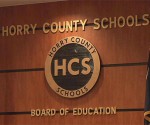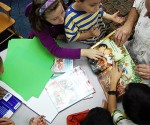NEPC Report Calls for Slowdown on Virtual School Growth

(Image: WikiMedia)
According to a new study from the National Education Policy Center, while virtual schools are continuing to grow in popularity, they need to make improvements in order to truly benefit students across the United States.
Based in Boulder, Colorado, the NEPC released the “Virtual Schools Report 2016” to argue that additional controls are needed in order to ensure that students who attend those schools receive a quality education.
“Measures of school performance consistently show virtual school outcomes that lag significantly behind those of traditional brick-and-mortar schools,” said Charisse Gulosino, assistant professor of leadership and policy studies at the University of Memphis and co-author of the study.
Gulosino worked with Gary Miron, a Western Michigan University professor, finding that blended schools, which make use of both in-person classroom teaching as well as online learning, performed as poorly as online schools in many of the categories, and sometimes even worse.
Study findings suggest a small percentage of students who are enrolled in virtual and blended schools performed at a higher than proficient level in English and math in their state. This held true for 23% of blended schools and 18% of virtual schools, writes Corinne Lestch for EdScoop.
On-time graduation rates for full-time students of both virtual and blended schools were half of the national average for traditional schools, which was found to be 81%. While 41% of virtual-school students graduated on time, the same was true for 37% of blended school students.
Student-to-teacher ratios were also found to be high. While the average in traditional brick-and-mortar schools is 16 students for every one teacher, virtual schools were found to have one teacher for every 35 students, and blended schools came close with 32 students for every teacher. Meanwhile, virtual schools operated by for-profit education management organizations were found to have 44 students for every teacher in comparison with fewer than 20 students for each teacher at nonprofit EMOs.
Critics of virtual charter schools include both teachers unions and charter school advocates. After a similar report was released last year, Nina Rees, president of the National Alliance for Public Charter Schools, said administrators should “shut some of these schools down.”
The report suggests that these poor results are in part due to the last-chance mentality associated with these schools. Many of the students who enroll have either flunked out or been kicked out of traditional schools after multiple disciplinary issues.
There are currently around 450 virtual schools throughout the county that enroll close to 261,000 students. While virtual schools associated with traditional districts enroll an average of 194 students, virtual charter schools are typically much larger, with an average student body of 982.
In all, 87 blended schools exist in the US, with around 26,000 students enrolled.
The authors suggest the rate of growth of virtual and blended schools should be either stopped or slowed down by policymakers, as should their enrollment sizes, until more research can be done as to why students at these schools are performing so poorly.
They report says that maximum student-teacher ratios should be implemented, as well as stricter data-reporting requirements to state education agencies. They also suggest outcome measures that are more appropriate to the characteristics specifically seen at online schools.
Author information
The post NEPC Report Calls for Slowdown on Virtual School Growth appeared first on Education News.










